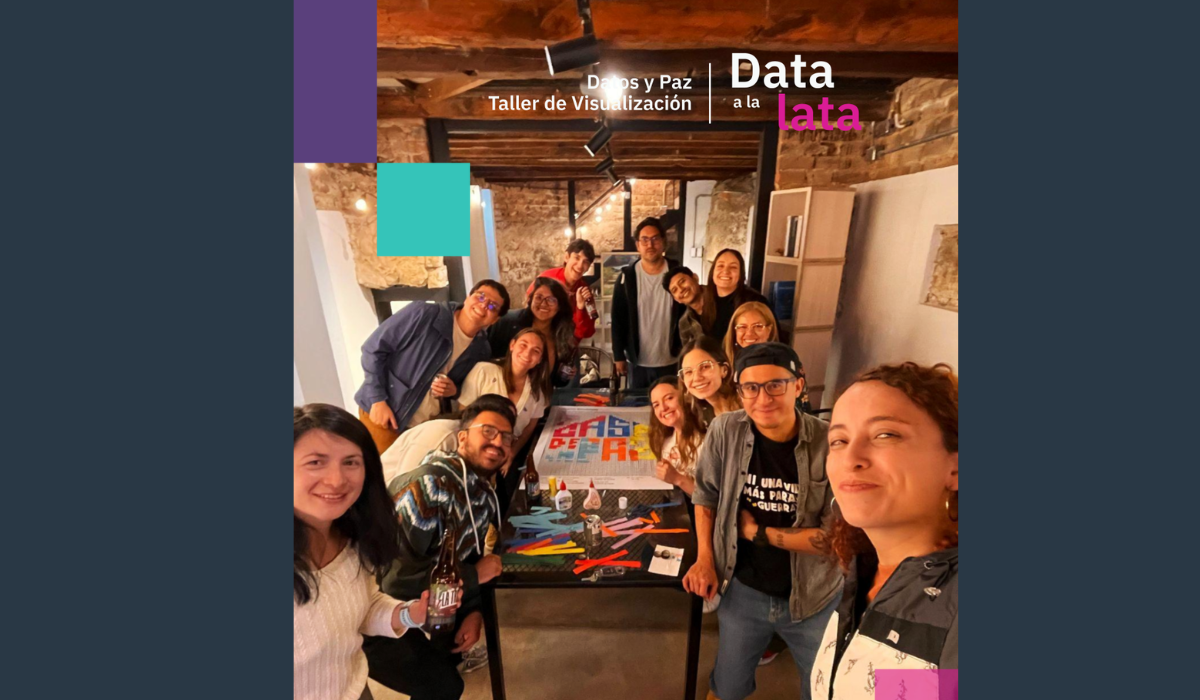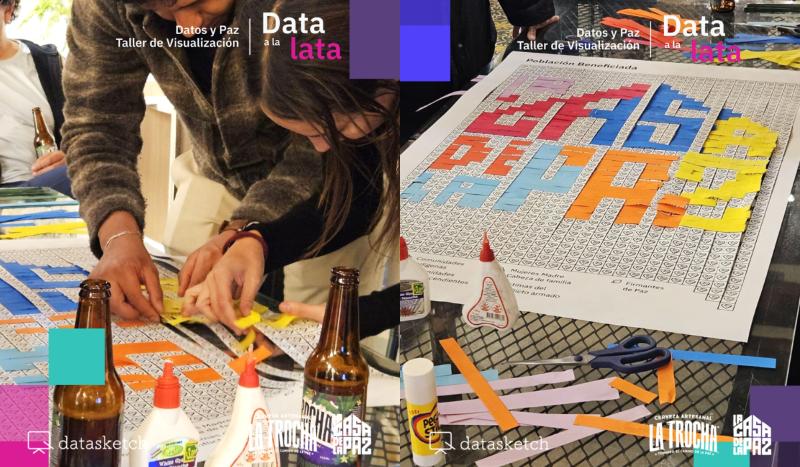Data A La Lata: A Gathering to Weave Data, Memory, and Peace

Yesterday at Datasketch, during our Monday session of Data a la Lata, we shared a deeply enriching encounter with La Trocha – La Casa de la Paz, an organization born from the framework of the Peace Agreement in Colombia. It is a collective project led by signatories of the agreement, committed to making the memories of the armed conflict visible, promoting a culture of peace, and creating dignified labor conditions.
La Trocha’s mission is to contribute to reconciliation, historical memory, and territorial transformation through social, cultural, and productive processes. Their work ranges from producing goods—like coffee, beer, and textiles—to creating spaces for training, knowledge exchange, and community action.
Located in the heart of Bogotá, La Casa de la Paz has become a meeting point for signatories, communities, and diverse citizens. It’s a living laboratory of peace, where ideas turn into action and stories into shared learning.
Challenges in Making Peace Visible: Between Data and Lived Experience
The work of La Trocha – La Casa de la Paz has a significant impact across various territories in Colombia, supporting communities that have experienced the consequences of armed conflict firsthand. Despite their continuous efforts, much of their work and achievements remain underrepresented in data.
During the session, we discussed the challenges faced—not only by La Trocha but by many peacebuilding organizations—in collecting, organizing, and communicating information about the impact of their work. Data can be a powerful tool: it allows them to build their own narratives, make informed decisions, and open pathways toward alliances, funding, or institutional recognition that ensure the sustainability of their initiatives.
However, it’s equally important to remember that the impact of peacebuilding work cannot be reduced to numbers. It is woven through relationships, care, memory, learning, and collective processes that are hard to capture in a report. That’s why it’s essential to combine data usage with methodologies that acknowledge the complexity of community-based, territorial peacebuilding efforts.
Weaving Visualizations with Paper and Community
Addressing this challenge, we used data visualization as a way to narrate the impact of La Trocha’s work through their own experiences and voices.
We worked with a dataset compiled by the organization, which identified which social groups have benefited from their support across various regions. The goal was to visually represent these populations—such as Indigenous communities, Afro-descendants, female heads of household, elderly people, Peace Agreement signatories, and others—using a paper-weaving technique.
Each color in the weaving represented a population group, and the number of strips corresponded to the number of people who benefited directly or indirectly from La Trocha’s work. Through this analog, collective methodology, we created a visualization that was understandable, tangible, and meaningful.
This exercise reminded us that data can also be told with our hands, using simple materials, and in community. Empowering social organizations with accessible tools and data-based methods is key to enabling them to build and share their own peace narratives, directly from the territories.

Data That Builds Bonds
Thanks to this collective work, we reflected on the power of data to tell human and social stories. The activity also opened a space for dialogue with representatives from La Trocha, who shared their day-to-day experiences, the challenges they face, and their unwavering commitment to a peace built through entrepreneurship, memory, and support for sustainable productive projects.